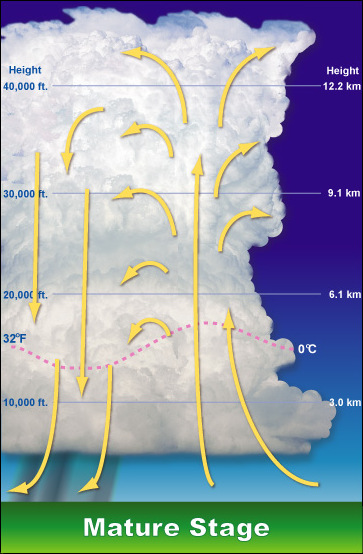
Isolated strong to severe thunderstorms and widespread heavy rainfall are possible across the southern Plains into Arkansas. Widespread showers with a slight chance of thunderstorms are possible across southern California. Urban flooding, rock and mudslides as well as minor debris flows near burn scars are possible. Read More >

Fig. 1. A “shelf cloud,” representing the leading edge of air spreading horizontally away from a thunderstorm downdraft. Wind gusts of 60 mph or more would likely be experienced along the leading edge and just to the rear of this cloud formation.

Fig. 2. Schematic of a mature thunderstorm, depicting the updraft (yellow arrows pointing toward top of the page) and the downdraft
A thunderstorm may eventually grow to a height of 50,000 feet or more before it stops developing. Generally speaking, the “taller” the storm, the more likely it is to produce violent weather.
Thunderstorms are characterized in two ways: general and severe. A Severe thunderstorm is one that produces large hail (i.e., one-inch diameter or larger), damaging wind gusts, and/or tornadoes.